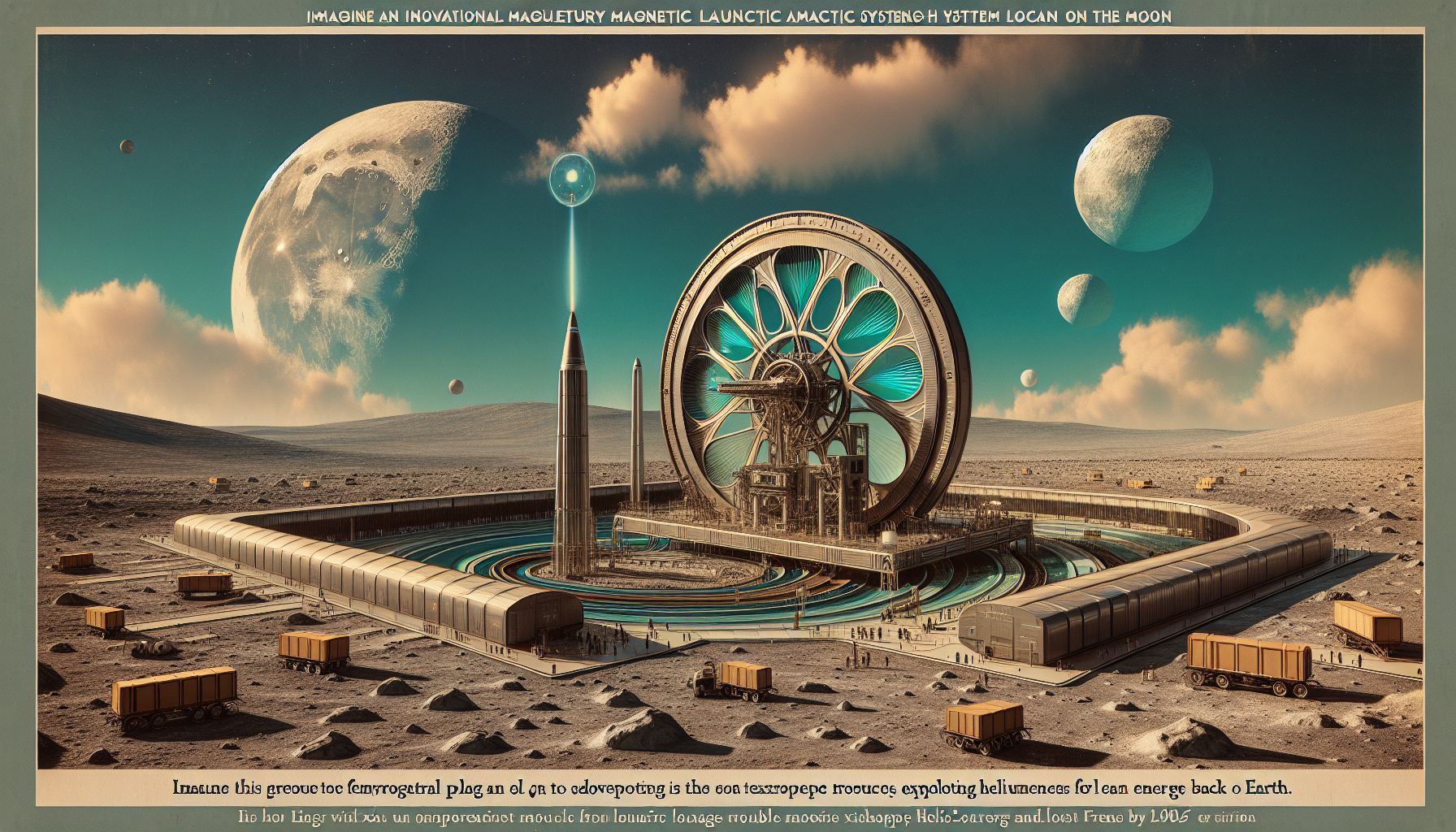China's Lunar Leap: Magnetic Catapult to Slingshot Resources from Moon to Earth

Shanghai, Monday, 26 August 2024.
Chinese scientists propose a revolutionary magnetic launch system on the Moon to catapult valuable resources back to Earth. This ambitious project, part of China’s lunar exploration plans, aims to exploit helium-3 for clean energy and could reshape space logistics by 2045.
A Technological Feat in Space Logistics
The Shanghai Institute of Satellite Engineering (SAST) is spearheading this groundbreaking initiative. Their proposal involves a magnetic catapult system designed to launch lunar resources back to Earth efficiently and cost-effectively. Utilizing a 50-meter rotating arm, the system would accelerate payloads to speeds of up to 2.4 kilometers per second before propelling them towards Earth.
Efficiency and Cost Reductions
The unique conditions of the lunar environment—low gravity and a high vacuum—make this system particularly efficient. Unlike Earth-based systems, the absence of atmospheric drag allows for smoother and faster launches. The magnetic catapult could reduce transportation costs by up to 90%, making it a pivotal development for long-term lunar exploration and commercialization[1].
The Promise of Helium-3
One of the primary resources targeted for transport is helium-3, a rare isotope on Earth but abundant on the Moon. Helium-3 holds significant promise as a clean energy source, particularly for nuclear fusion reactors. These reactors can produce energy without generating harmful radioactive waste, positioning helium-3 as a potential game-changer in the global energy market[2].
Technical Specifications and Challenges
The proposed system will feature a high-temperature superconducting motor and will be powered by a combination of solar and nuclear energy. The rotating arm, designed to operate for up to 20 years, is expected to weigh around 80 tons. Despite the high initial investment—estimated at approximately $18.2 billion—the potential profits from helium-3 mining could exceed 100 billion yuan annually[3].
A Vision for Future Lunar Bases
This project is part of China’s broader plan to establish a permanent lunar base, potentially in collaboration with Russia. The magnetic catapult system is crucial for the logistics of this lunar base, enabling the efficient transfer of resources. The catapult is expected to become operational around 2045, although numerous challenges remain, including the extraction of helium-3 from lunar soil and the installation of the system on the rugged lunar surface[4].
Long-term Implications
If successful, China’s magnetic catapult could revolutionize space logistics and resource utilization. It would not only provide a sustainable method for transporting lunar resources but also pave the way for deeper space exploration and human settlements on the Moon. By reducing dependence on fossil fuels and promoting clean energy, the project underscores China’s commitment to addressing global energy challenges through innovative space technologies[5].

